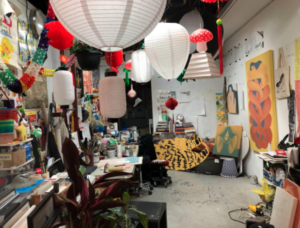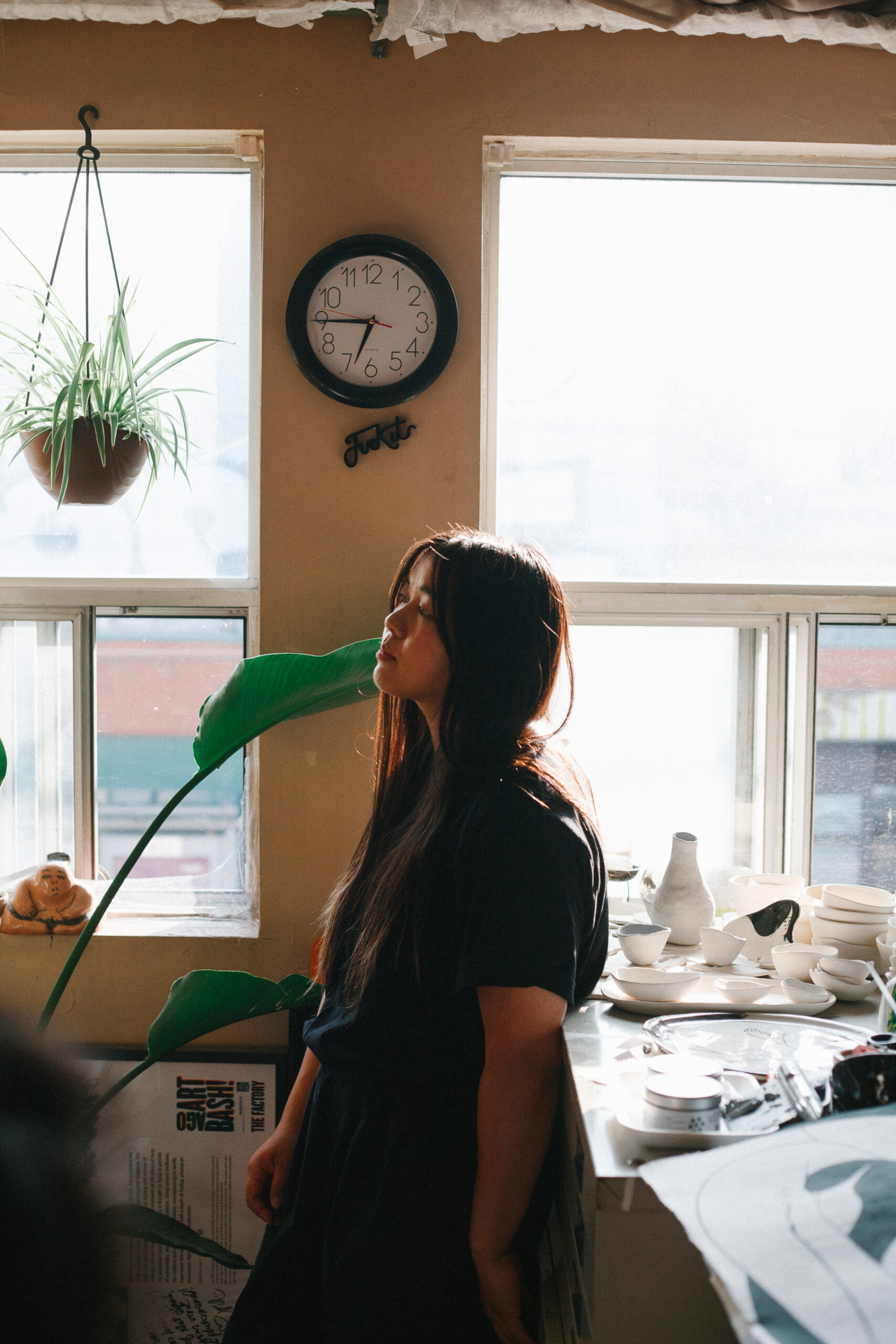Ness Lee is an illustrator and artist based out of Toronto whose work has been featured at the AGO, the Agnes Etherington Art Center, the Gardiner Museum, the Art Gallery of Hamilton, as well as galleries in New York, Boston, Los Angeles, Miami and Montreal. Lee is also ROOM’s cover artist judge (!!!) and offered answers for Room’s interview questions over email, discussing artistic practice, process, self-care, and the importance of a solid work space for art. The Cover Art Contest is open until February 15th, 2023.
—-
ROOM: Can you tell us about yourself and what kinds of art you like to create?
NESS LEE: I am a son of a bun-softy artist. I explore notions of intimacy and self-love in their practice, using a wide range of mediums as an expression of language and being.
ROOM: How did you become an artist? Where there any major influence, challenges, or joys that went into your decision to pursue creating art?
NL: It was a very gradual, natural process, I feel. I started with following my interests and noticing how making art made me feel and how it became a language of expression that felt truer than the words I can gather. The major influences were the people around me, being inspired by others that are feeling their way through their practice and themselves. The number of challenges that come with being an artist are many and it comes with just as many joys, if anything the joy of being able to be who I am, finding who I am and expressing these experiences through art has been the ultimate joy.
ROOM: Your art has moved from illustration to bigger and bigger mediums over the years, including room-sized installations that engulf the viewer in the intimacy of your art. Can you speak to that process and any differences across mediums?
NL: The progression in scale with my work, I feel happened naturally—along with being given the opportunity to do so with projects—I think I gradually felt more inclined to explore different ways of expression, one of them being with scale and various mediums. The feeling of things becomes different where there are various ways to approach them.
When it comes to the choosing of different mediums in larger scaled spaces, a lot of it is determined by what I want to say, the concept of it, or what would best convey the feeling.
ROOM: How did you get into larger installments, and do those affect how you approach “2D” illustration now?
NL: I think it gradually happened—I would do smaller scaled installations and, as the projects came along, I would be offered a larger space to explore, and so on. It affects my approach to 2D illustration in ways of knowing: Knowing how the output of a piece can be with scale, knowing the different options of application, and knowing how those would affect its outcome. A lot of it has come with practice.
ROOM: What creative projects are you working on right now?
NL: I am working on a lot of commissions at the moment, with a solo show coming up in the fall, as well as some print releases, editions and murals in store. Currently there is an upcoming event—The Rhubarb festival—which I am doing with Artists Myung Sun Kim and Jody early February at Buddies in Bad Times [Theatre in Toronto].
ROOM: Among other things, your art circles the theme of self-acceptance and self-love. As I go through your work, I’ve been revisiting my quiet rage about how whole-heartedly neoliberalism appropriated the concept of self-love by making it into simply items that can be bought (I am very aware of the emotional irony at being mad at “self-love,” ha.) As the work you make strikes me as far more radical, I’m curious: How do you think one can embrace self-love while avoiding the pitfalls of the material commodification of it?
NL: I think the commercialization of “self-care” has definitely defined it in a way that can feel very surface level—I feel a lot of things that become this way are usually because of the lack of digging deeper, and asking the hard questions, [and a lack of] honesty with yourself and reflection that comes with understanding self care. I think it is easy to read the definitions of things, or be told what things are, but it is a whole other level of knowing when you feel it, when you absorb it fully and openly to understand.
ROOM: As you’re judging this year’s Cover Art Contest, what’s the difference for you between a “good” and a “great” contest submission?
NL: I think that might be hard to answer- a lot of art that resonates with me lately is from a feeling—a lot of it can do with factors such as colour, movement, and mood. I find with great illustrations it does come down to the conveyance of what is being presented visually. To be able to say what is needed in a single image can be such a beautiful challenge with illustration.
ROOM: Do you have any advice for emerging visual artists, or those who might be submitting to a contest for the first time?
NL: I feel like with anything of creative passion and interest, it is necessary to give yourself the chance to try. A lot of things with art in general is the allowance of self to be curious and explore, to get to know yourself and understand what you like and don’t like, or what drives you to creation, what excites you.
ROOM: Recently, I’ve been obsessed with making meaning in spaces via indoor material: One of the themes I see in your studio is, in the upper-crust parlance, “maximalism.” Good GOD I miss maximalism! Can you talk a bit about what you’re going for in the working spaces where you create? How does it affect your work?
NL: For me, I think our external environment shapes our inner world—a lot of the comforts I have had to create art has been because I was able to feel like I could be vulnerable in my external world. I often create these, what appears to be, maximalist spaces, as it is a sign of me trying to find my place in the space. Most of it is about feeling safe, feeling okay to let go. When doing work that requires me to face myself, to hear myself in such a way, I think I need my mind and my heart to feel okay before I do so.

A previous studio space, image provided by Ness Lee.














